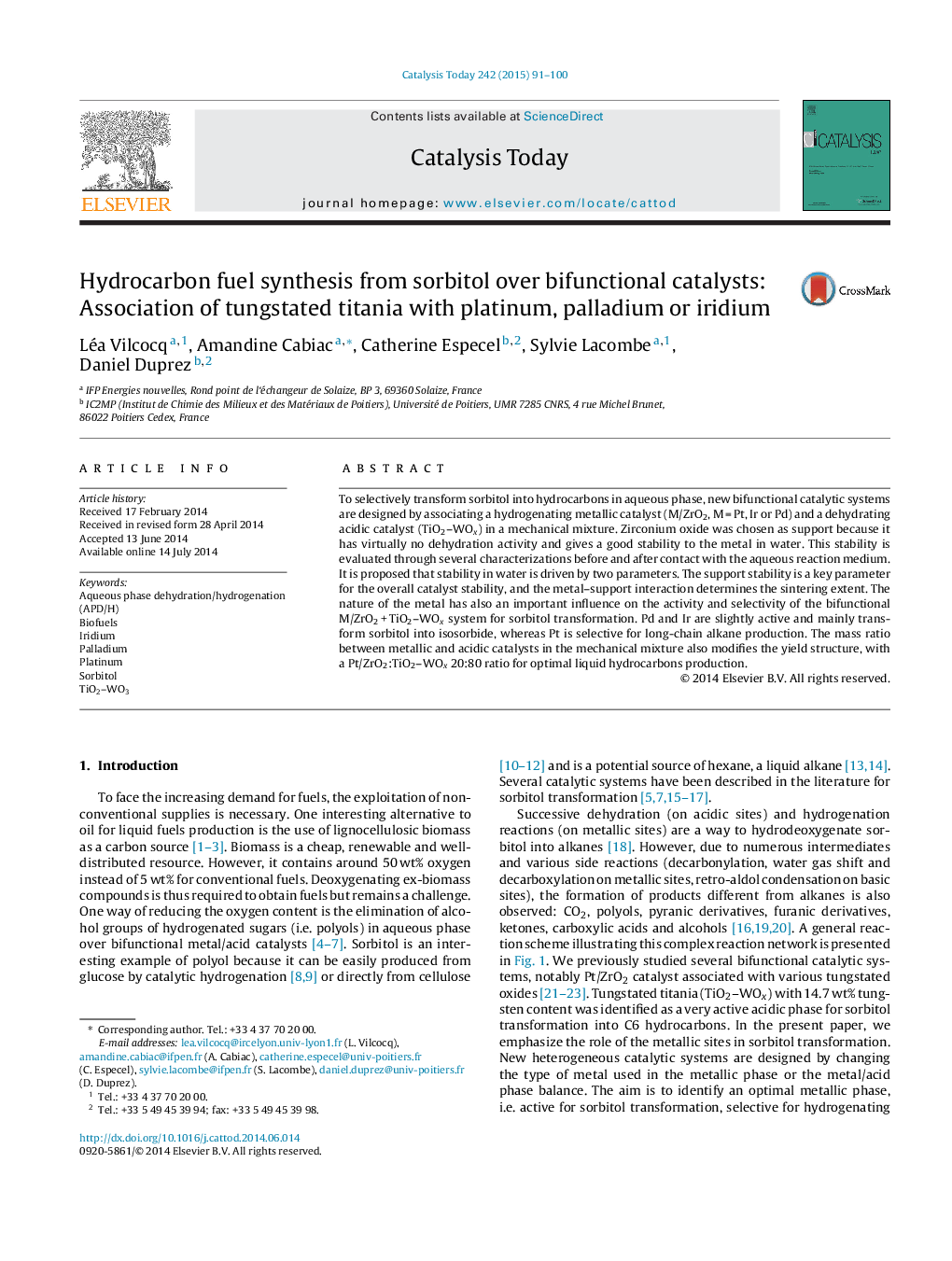| Article ID | Journal | Published Year | Pages | File Type |
|---|---|---|---|---|
| 53823 | Catalysis Today | 2015 | 10 Pages |
•Stability of metallic catalysts in water depends on the nature of support and metal.•We observed that ZrO2 tends to stabilize the metallic phase of platinum catalysts better than that of iridium or palladium.•Catalyst performances are studied for sorbitol transformation in aqueous media.•Ir or Pd/ZrO2 + TiO2–WOx selectively transform sorbitol into isosorbide and C5–C6 compounds (pentanols, hexanols, pentane and hexane).•Pt/ZrO2 + TiO2–WOx catalyzes the dehydration–hydrogenation of sorbitol into long-chain alkanes.
To selectively transform sorbitol into hydrocarbons in aqueous phase, new bifunctional catalytic systems are designed by associating a hydrogenating metallic catalyst (M/ZrO2, M = Pt, Ir or Pd) and a dehydrating acidic catalyst (TiO2–WOx) in a mechanical mixture. Zirconium oxide was chosen as support because it has virtually no dehydration activity and gives a good stability to the metal in water. This stability is evaluated through several characterizations before and after contact with the aqueous reaction medium. It is proposed that stability in water is driven by two parameters. The support stability is a key parameter for the overall catalyst stability, and the metal–support interaction determines the sintering extent. The nature of the metal has also an important influence on the activity and selectivity of the bifunctional M/ZrO2 + TiO2–WOx system for sorbitol transformation. Pd and Ir are slightly active and mainly transform sorbitol into isosorbide, whereas Pt is selective for long-chain alkane production. The mass ratio between metallic and acidic catalysts in the mechanical mixture also modifies the yield structure, with a Pt/ZrO2:TiO2–WOx 20:80 ratio for optimal liquid hydrocarbons production.
Graphical abstractFigure optionsDownload full-size imageDownload high-quality image (143 K)Download as PowerPoint slide
